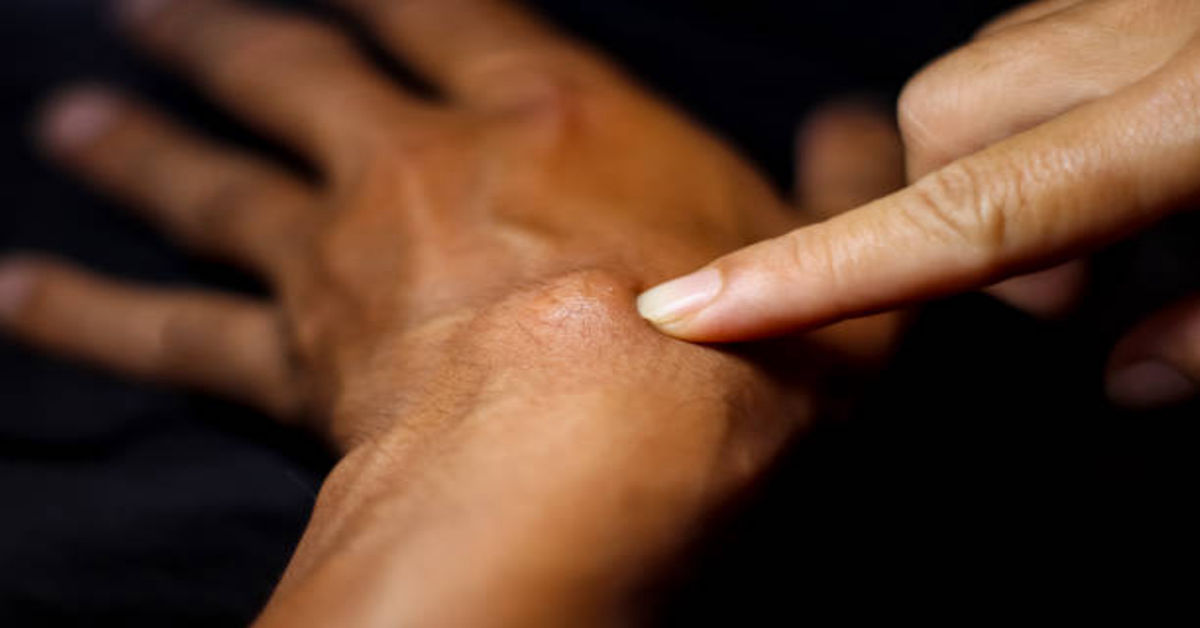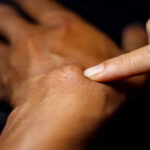A ganglion cyst is a non-cancerous, fluid-filled lump that usually develops near a joint or tendon. Although it is often harmless and painless, its appearance may raise concern for many individuals because it can grow suddenly, cause discomfort, restrict movement, or press on nearby nerves. Ganglion cysts are among the most common soft tissue lumps found in the hand and wrist, but they can also appear in the ankle, knee, foot, shoulder, fingers, or spine region. Understanding what a ganglion cyst is, how it develops, what symptoms it may cause, how it is diagnosed, and what treatment options exist can help individuals manage their condition effectively and prevent unnecessary fear.
The purpose of this detailed article is to provide clear and well-organized information about ganglion cysts, including their causes, development process, risk factors, diagnosis, modern treatment methods, home care, prevention tips, FAQs, and lifestyle adjustments. This information is written in original words without copying external sources, aiming to educate people with an easy-to-understand yet informative and medically-aligned explanation.
What Is a Ganglion Cyst?
A ganglion cyst is a soft, jelly-like, or firm lump that forms near a joint or tendon sheath. It contains a thick, sticky, clear or pale-yellow fluid similar to the synovial fluid that lubricates and cushions joints. These cysts are usually round or oval, but in some cases, they may develop in irregular shapes. The most common location is the back of the wrist, followed by the top of the foot, palm side of the wrist, fingers, and occasionally other joints.
A ganglion cyst may remain small for years or grow rapidly within a few days. Some cysts disappear on their own without treatment, while others may persist for a long time. The size of the cyst can change depending on joint activity; for instance, repetitive use or strain may increase fluid accumulation, causing it to enlarge. Rest may reduce pressure and temporarily decrease its size. Although ganglion cysts are benign, it is advisable to monitor them to avoid nerve compression, joint dysfunction, or pain.
Characteristics of a Ganglion Cyst
Below is a structured table describing common features:
| Feature | Description |
|---|---|
| Nature | Non-cancerous, benign, fluid-filled lump |
| Texture | Firm, rubbery, or spongy depending on size and location |
| Shape | Usually round or oval |
| Fluid Type | Thick, gelatin-like synovial fluid |
| Common Locations | Wrist, hand, ankle, knee, foot, shoulder, spine area |
| Growth Pattern | May enlarge or shrink over time; can disappear spontaneously |
| Mobility | Generally fixed to joint or tendon but moves under skin when pressed |
Causes and Development Mechanism
The exact cause of ganglion cyst formation is not completely proven, but medical studies suggest several contributing factors. These cysts are believed to form when joint or tendon tissue degenerates or weakens, allowing fluid to escape into a sac-like membrane. Continuous stress, mechanical pressure, or injury may trigger this process.
Common Causes and Triggers
- Repetitive Joint or Tendon Use
People who perform activities requiring continual wrist movement such as computer work, sports, or factory tasks are at higher risk. - Injury or Trauma History
Although not mandatory, many individuals report previous joint injury that may weaken tissue structure and lead to cyst formation. - Degenerative Joint Conditions
Osteoarthritis or chronic joint inflammation can increase friction and fluid pressure, promoting cyst growth, especially in older adults. - Synovial Herniation Theory
Some experts suggest that joint fluid pushes through weakened tissue forming a balloon-like cyst.
Types of Ganglion Cysts Based on Location
| Type | Location | Common Symptoms |
|---|---|---|
| Dorsal Wrist Cyst | Back of the wrist | Visible lump, discomfort with extension |
| Volar Wrist Cyst | Palm side of wrist | Pain, possible artery compression risk |
| Mucous Cyst | Fingers (near nail) | Nail deformity, tenderness |
| Ankle/Foot Cyst | Near ankle or top of foot | Pain with walking or footwear |
| Spinal Ganglion | Near nerve roots | Rare but may cause nerve pain |
Symptoms and Signs
Not everyone with a ganglion cyst experiences symptoms. Some individuals seek treatment only because of its visible appearance. However, symptoms may occur when the cyst exerts pressure on surrounding structures such as nerves, tendons, or vessels.
Most Common Symptoms Include
- Noticeable lump under the skin
- Pain that worsens with movement or pressure
- Tingling, burning, or numbness if nerves are compressed
- Weakness or reduced grip strength
- Limited joint mobility or stiffness
- Cosmetic concern leading to emotional discomfort
Diagnosis and Medical Evaluation
A healthcare professional can typically diagnose a ganglion cyst through physical examination. They may ask about history of injury, pain patterns, and lifestyle habits. Diagnosis may also involve the following methods:
| Method | Purpose |
|---|---|
| Physical Exam | Determines size, flexibility, and discomfort |
| Transillumination | Light passed through cyst to detect fluid presence |
| Ultrasound | Identifies cyst structure and internal components |
| MRI (rare) | Used when deep tissue evaluation or tumor confusion arises |
| Fine Needle Aspiration | Extracts sample fluid for clarity |
Treatment and Management Options
Treatment depends on severity, location, symptoms, and patient preference. In many cases, if the cyst is painless and not interfering with movement, doctors recommend simple observation.
Main Treatment Approaches
- Watchful Waiting
If the cyst is mild, painless, and not enlarging, no immediate intervention is required. Regular monitoring is suggested. - Immobilization or Activity Modification
Reducing repetitive strain or using a wrist brace may shrink cyst size. - Aspiration (Fluid Drainage)
A needle removes the fluid, offering temporary relief; however, cysts may recur because the capsule remains intact. - Steroid Injection
Used after aspiration to minimize inflammation, though recurrence is still possible. - Surgical Removal (Excision)
Recommended for recurring cysts causing pain or functional limitation; involves removing both cyst and connecting stalk to reduce recurrence likelihood.
Comparison Table of Treatment Methods
| Method | Invasiveness | Pain Relief | Recurrence Risk | Healing Time |
|---|---|---|---|---|
| Observation | None | No direct relief | Low-moderate | Not applicable |
| Immobilization | Low | Mild-moderate | Moderate | 1-4 weeks |
| Aspiration | Mild | Temporary | High | Few days |
| Steroid Injection | Mild | Moderate | Moderate-high | Few days |
| Surgery | High | Long-term | Low | Weeks to months |
Home Remedies and Self-Care
Although home remedies cannot remove cysts permanently, they can help manage discomfort and prevent enlargement.
- Rest and reduce repetitive joint stress
- Apply warm compresses to improve blood flow
- Use supportive splints or braces during active periods
- Gentle stretching exercises with professional guidance
- Maintain proper workplace ergonomics
Important: Do not attempt to puncture or hit a cyst at home; this can cause infection, nerve damage, or scarring.
Possible Complications If Ignored
While most ganglion cysts remain harmless, leaving them untreated when they are painful or growing may lead to:
- Permanent nerve compression
- Difficulty gripping or lifting objects
- Joint stiffness or chronic discomfort
- Recurrence despite temporary treatments
- Infection if punctured incorrectly
Lifestyle and Prevention Tips
Although not fully preventable, certain practices reduce risk:
| Prevention Practice | Benefit |
|---|---|
| Maintaining joint flexibility | Reduces stiffness and fluid build-up |
| Using protective gear during sports | Prevents impact injuries |
| Taking breaks from repetitive tasks | Reduces tissue strain |
| Strengthening muscles around joints | Improves support and stability |
| Managing arthritis early | Prevents tissue degeneration |
Conclusion
A ganglion cyst is a common benign swelling that appears near joints or tendons, especially in the wrist and hand. Although it can cause discomfort and affect movement, it is generally not dangerous and may disappear naturally over time. Treatment options include resting, aspiration, and surgery when necessary. Understanding symptoms and proper care can help individuals make informed decisions while maintaining a comfortable and active lifestyle. With supportive management and professional guidance, one can continue daily activities without significant limitations.
FAQs
1. Do ganglion cysts go away on their own?
Yes, many cysts disappear without any treatment, especially when stress on the affected joint is reduced.
2. Can exercise worsen a ganglion cyst?
Excessive or repetitive movement can enlarge the cyst; however, gentle stretches may help if guided by a professional.
3. Are ganglion cysts cancerous or life-threatening?
No, ganglion cysts are non-cancerous and typically harmless, though they may cause discomfort or nerve pressure.
4. Can children develop ganglion cysts?
Yes, ganglion cysts can occur at any age, but they are more common in adults aged 20 to 50 years.
5. Is surgery the best treatment?
Surgery offers the lowest recurrence rate, but it is usually reserved for severe, painful, or recurring cases.











